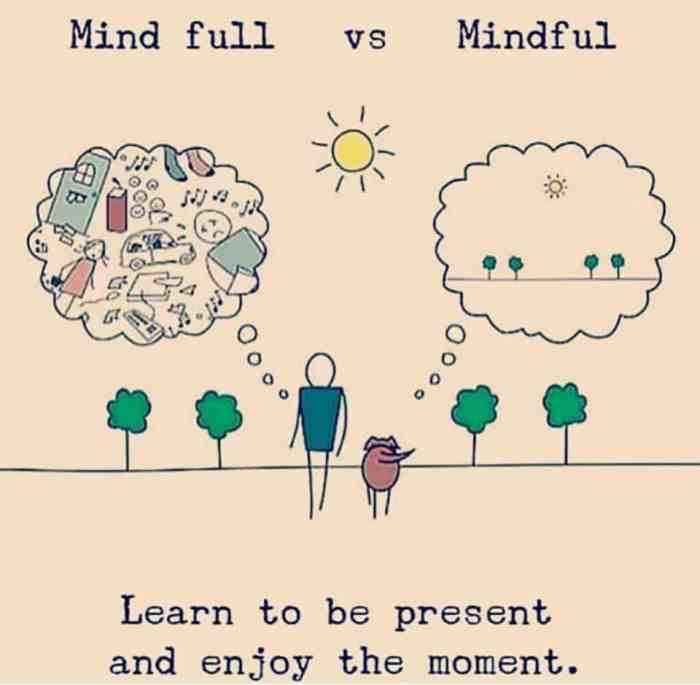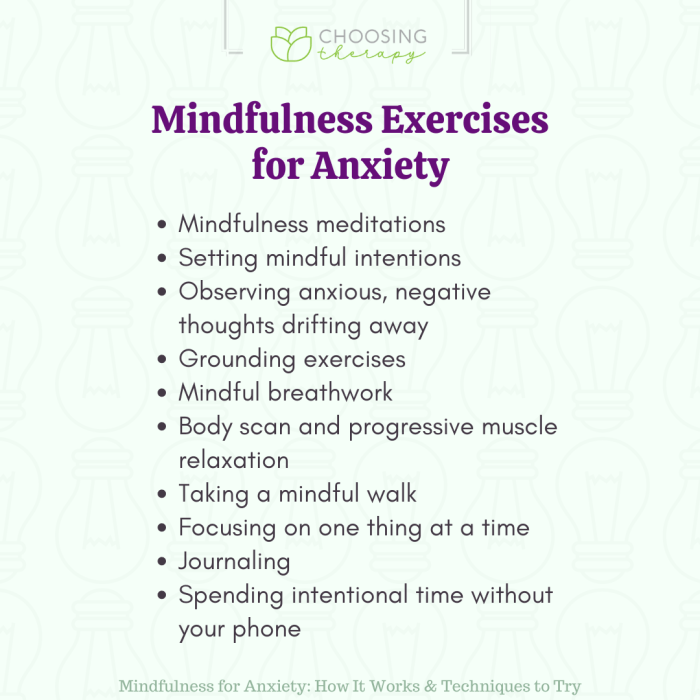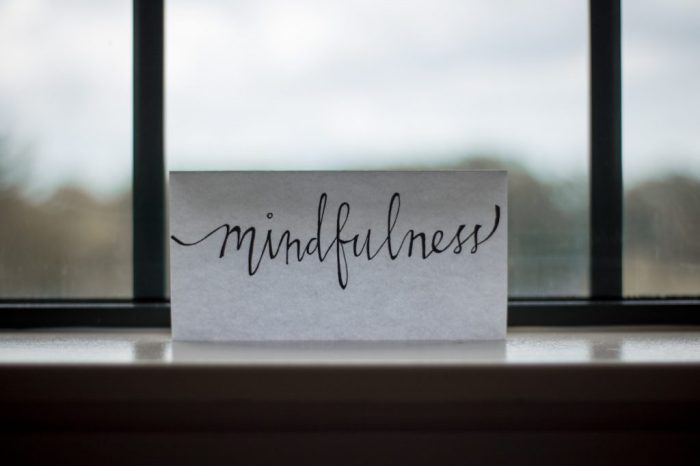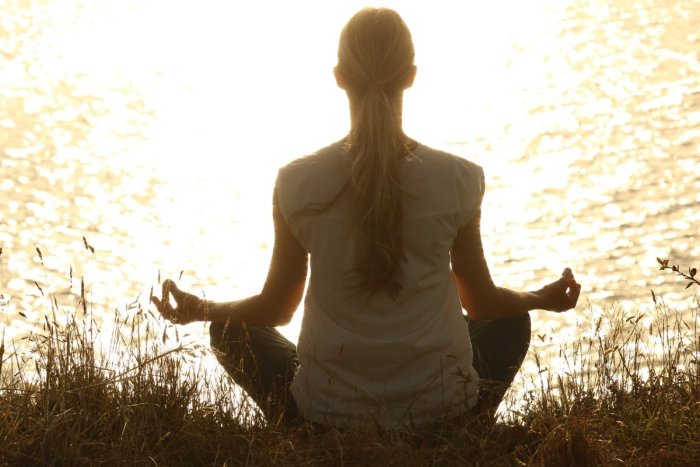Mindfulness meditation for anxiety sets the stage for this enthralling narrative, offering readers a glimpse into a story that is rich in detail with casual formal language style and brimming with originality from the outset.
Exploring the depths of mindfulness meditation and its profound impact on alleviating anxiety, this discussion dives into the core principles and practical applications of this transformative practice.
Introduction to Mindfulness Meditation for Anxiety

Source: lifehack.org
Mindfulness meditation is a practice that involves focusing on the present moment without judgment. It encourages individuals to be aware of their thoughts, feelings, sensations, and surroundings in a non-reactive manner.
This practice can help with anxiety by allowing individuals to observe their anxious thoughts and feelings without becoming overwhelmed by them. By cultivating a sense of awareness and acceptance, mindfulness meditation can help individuals develop a more balanced and compassionate relationship with their anxiety.
Benefits of Incorporating Mindfulness Practices for Anxiety Relief
- Reduces Stress: Mindfulness meditation can help lower stress levels by promoting relaxation and reducing the body’s stress response.
- Enhances Emotional Regulation: By increasing awareness of emotions, mindfulness meditation can help individuals regulate their emotional responses, including anxiety.
- Improves Focus and Clarity: Practicing mindfulness can enhance concentration and cognitive function, allowing individuals to better manage anxious thoughts and worries.
- Promotes Resilience: Mindfulness meditation can help individuals build resilience and cope with anxiety triggers more effectively over time.
Understanding Anxiety and Its Impact

Source: choosingtherapy.com
Anxiety is a common mental health condition characterized by feelings of worry, fear, and unease. It can manifest in various symptoms, such as:
Symptoms of Anxiety
- Excessive worrying
- Restlessness
- Difficulty concentrating
- Irritability
- Muscle tension
- Insomnia
Anxiety can have a significant impact on both mental and physical well-being. It may lead to:
Impact on Mental and Physical Health
- Increased stress levels
- Disruption of daily activities
- Impaired concentration and decision-making
- Difficulty in relationships
- Physical symptoms such as headaches, digestive issues, and fatigue
There are common triggers that can exacerbate anxiety, including:
Common Anxiety Triggers
- Stressful life events such as job loss or relationship issues
- Health problems or chronic illnesses
- Traumatic experiences
- Financial difficulties
- Conflict or uncertainty
How Mindfulness Meditation Works

Source: kidsmentalhealth.ca
Mindfulness meditation operates on the principle of focusing one’s attention on the present moment without judgment. By cultivating awareness of thoughts, feelings, and bodily sensations, individuals can learn to observe them without getting caught up in them.
Principles of Mindfulness Meditation
- Mindfulness involves paying attention to the present moment.
- Non-judgmental awareness allows individuals to accept their experiences without labeling them as good or bad.
- Cultivating mindfulness requires practice and patience to develop a mindful mindset.
Role of Mindfulness in Managing Anxiety
- Mindfulness helps individuals recognize anxious thoughts and feelings without reacting impulsively.
- By practicing mindfulness, individuals can learn to respond to anxiety with calmness and clarity.
- Regular mindfulness meditation can reduce the frequency and intensity of anxiety symptoms over time.
Techniques in Mindfulness Meditation for Anxiety
- Focus on the breath: Paying attention to the sensations of breathing can anchor the mind in the present moment.
- Body scan: Progressively scanning the body for tension and releasing it can promote relaxation and reduce anxiety.
- Labeling thoughts: Identifying and labeling anxious thoughts can create distance from them, preventing rumination.
Scientific Evidence and Research
Research studies have shown a growing body of evidence supporting the efficacy of mindfulness meditation in reducing anxiety symptoms. Numerous studies have demonstrated that regular practice of mindfulness meditation can lead to a significant decrease in anxiety levels and an overall improvement in mental well-being.
Effectiveness of Mindfulness Meditation for Anxiety
- A meta-analysis published in JAMA Internal Medicine found that mindfulness meditation programs had moderate evidence of improving anxiety, depression, and pain compared to other interventions.
- Research conducted at Johns Hopkins University showed that mindfulness meditation programs can help reduce symptoms of anxiety, depression, and pain in patients with chronic conditions.
- Studies have also indicated that mindfulness meditation can lead to changes in brain structure and function, resulting in improved emotional regulation and decreased anxiety levels.
Brain Activity and Anxiety
- Neuroimaging studies have shown that mindfulness meditation can alter brain activity in regions associated with anxiety, such as the amygdala and prefrontal cortex.
- By practicing mindfulness, individuals can learn to regulate their emotions and responses to stress, leading to a reduction in anxiety symptoms over time.
- Experts suggest that mindfulness meditation helps rewire the brain, promoting a sense of calm and relaxation that can counteract the effects of anxiety.
Benefits of Mindfulness for Anxiety
- Psychologists emphasize that mindfulness meditation can help individuals develop a greater sense of self-awareness and acceptance, reducing the impact of anxiety triggers.
- By cultivating mindfulness, individuals can learn to observe their thoughts and emotions without judgment, leading to a decrease in anxiety-related distress.
- Experts recommend integrating mindfulness practices into daily routines to build resilience and coping strategies for managing anxiety effectively.
Practical Tips for Starting Mindfulness Meditation

Source: gayleweilllcsw.com
To begin a mindfulness meditation practice, it is essential to start slowly and gradually increase the duration of your sessions. Consistency is key, so aim for short sessions daily rather than long sessions sporadically. Find a quiet and comfortable place where you won’t be disturbed to practice mindfulness meditation.
Creating a Conducive Environment for Meditation
- Choose a peaceful and clutter-free space where you can sit comfortably.
- Dim the lights or use candles to create a calming atmosphere.
- Consider using cushions or a meditation bench to support your posture.
- Play soft background music or nature sounds to enhance relaxation.
Overcoming Common Challenges When Starting Mindfulness Meditation for Anxiety
- Accept that your mind will wander during meditation; gently bring your focus back to the present moment without judgment.
- Start with short meditation sessions and gradually increase the duration as you build your practice.
- Don’t get discouraged if you find it difficult at first; meditation is a skill that improves with practice.
- Experiment with different meditation techniques to find what works best for you, such as deep breathing or body scan meditation.
Incorporating Mindfulness into Daily Routine
Integrating mindfulness practices into your daily routine can help you experience the benefits of mindfulness meditation consistently. By incorporating mindfulness into your daily activities, you can improve your overall well-being and reduce anxiety levels.
Practicing Mindfulness Throughout the Day
- Start your day with a mindful morning routine, such as deep breathing exercises or a short meditation session.
- Practice mindfulness while eating by paying attention to the flavors, textures, and sensations of each bite.
- Take short mindfulness breaks throughout the day to pause, breathe, and check in with your thoughts and emotions.
- Incorporate mindfulness into daily tasks like washing dishes or taking a shower by focusing on the sensations and movements involved.
Staying Consistent with Mindfulness Meditation
- Set a specific time each day for your mindfulness practice to establish a routine.
- Use reminders or cues like post-it notes or phone alarms to prompt you to practice mindfulness regularly.
- Find a quiet and comfortable space where you can practice mindfulness without distractions.
- Be gentle with yourself and don’t judge your meditation sessions – simply observe your thoughts and let them pass.
Wrap-Up

Source: upi.com
As we conclude this insightful journey into the realm of mindfulness meditation for anxiety, it becomes evident that embracing mindfulness not only cultivates inner peace but also empowers individuals to navigate the challenges of anxiety with resilience and grace.